Rosemary: How to Grow and Maintain a Favorite Herb in a Container Garden or Herb Garden
Rosemary: A Perennial Herb for a Container Garden or in the Herb Garden.
Rosemary, known by its scientific name Rosmarinus officinalis, is a perennial herb native to the Mediterranean region. It is grown for its aromatic leaves and is an excellent culinary herb. Rosemary is a member of the mint family, and its leaves have a slightly bitter, woody flavor. This herb is easy to grow and requires minimal maintenance. This guide will discuss the main aspects of growing and maintaining rosemary plants.
Soil pH Requirements.
Rosemary prefers a neutral to alkaline soil with a pH range of 6 to 7.5. If the soil is too acidic, add lime to raise the pH. If the soil is alkaline, add sulfur to lower the pH. It is important to note that rosemary is a salt-sensitive plant, so avoid using fertilizers that contain high salt levels.
Sunlight Needs.
Rosemary requires at least 6 hours of direct sunlight daily. The plant thrives in a warm, dry climate, making it an ideal option for growing in the USDA hardiness zones 7 to 10.
Physical Appearance of rosemary.
Rosemary has needle-like leaves that are about an inch long and usually green to gray-green in color. The leaves are arranged in pairs along the stem and are very aromatic. When the plant blooms, it produces small blue, pink, or purple flowers. The plant is evergreen in USDA hardiness zones 8 and higher, but it loses its leaves in colder climates.
Culinary Uses.
Rosemary's distinctive flavor makes it a popular seasoning for many dishes. It pairs especially well with meats such as lamb, pork, and chicken. It can also be used in soups, stews, and sauces. You can use fresh or dried rosemary for cooking. If using fresh, chop the leaves finely before adding them to your dish.
How to Plant Rosemary.
1. Choose a location that receives at least 6 hours of direct sunlight daily.
2. Prepare the soil by adding compost or well-rotted manure to improve drainage.
3. If planting in-ground, dig a hole slightly larger than the plant's root ball.
4. If planting in a pot, choose a container 12 inches deep and wide., at a minimum.
5. Fill the hole or the pot with soil, leaving enough space for the plant.
6. Gently remove the plant from its container and loosen any tangled roots.
7. Place the plant in the hole or the pot, ensuring it is at the same depth as in the container.
8. Water the plant well and cover the soil with mulch to conserve moisture.
How to Maintain Rosemary.
1. Water the plant deeply twice a week, perhaps more often during hot and dry weather.
2. Prune the plant regularly to promote new growth and prevent it from becoming woody. Prune rosemary in the spring after new growth has begun.
3. Fertilize the plant once a year with a balanced fertilizer, but avoid using high-salt fertilizers.
4. When growing in pots or containers, consider repotting once every two to three years to prevent the plant from becoming root-bound.
5. Protect the plant from strong winds that can cause breakage.
6. Watch for pests such as spider mites, mealybugs, and aphids. Treat these with organic pest control methods such as neem oil.
Rosemary is a versatile and easy-to-grow herb that can add flavor and aroma to any dish. Following the tips above, you can grow and care for your rosemary plants successfully. Happy gardening! Please like our video and hit the notification button for our YouTube alerts.
Connect with us
Facebook: https://www.facebook.com/TayloesLawnCare
Web: https://www.tayloeslawncare.com
MeWe: https://mewe.com/p/diyhomegarden
Image and music licensed via Canva Pro
-
 5:45
5:45
BLeighve41
1 year agoMedicinal Herbs: Rosemary: The Secrets of the Kitchen Herbs
27 -
 1:32
1:32
Garden Revelations
1 year agoMarjoram: A Culinary Herb That Will Thrive in Containers or Your Herb Garden.
34 -
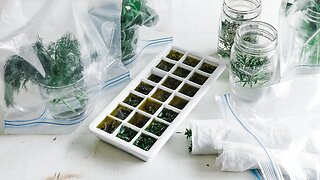 8:36
8:36
Chef Billy Parisi
3 years agoHow to Store Fresh Herbs » Preserving and Extending the Life of Your Herbs
47 -
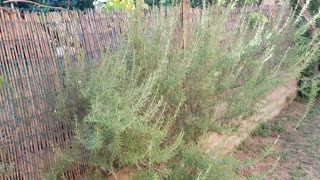 0:39
0:39
Cloudberd
9 months agoRosemary plant
1 -
 7:59
7:59
asolitarypagan.com
10 months agoGrowing Your Herbs Indoors
364 -
 31:16
31:16
Homesteading Family
3 years ago15 MEDICINAL HERBS TO GROW AND THEIR COMMON USES
1.09K4 -
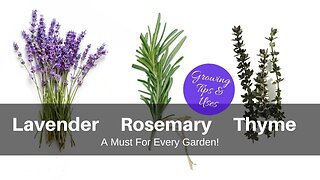 13:37
13:37
You Make It Simple
4 years agoLavender, Rosemary & Thyme | A Must for Every Garden
10 -
 28:02
28:02
The Honeystead
1 year ago $0.05 earnedYou CAN grow your own Medicinal Garden!
3722 -
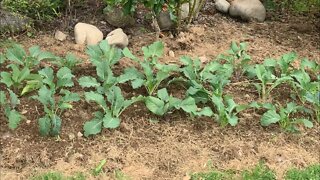 37:35
37:35
Darryl Talks About New Zealand
4 years ago $0.03 earnedHow to grow plants and seeds form store bought fruit and vegetables.
361 -
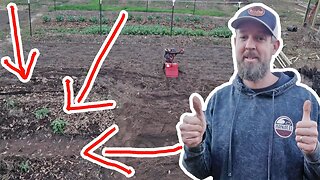 10:30
10:30
DavidTheGood
1 year ago $0.02 earnedHow We're Building a SIMPLE Combination Herb, Kitchen and Medicinal Garden
131